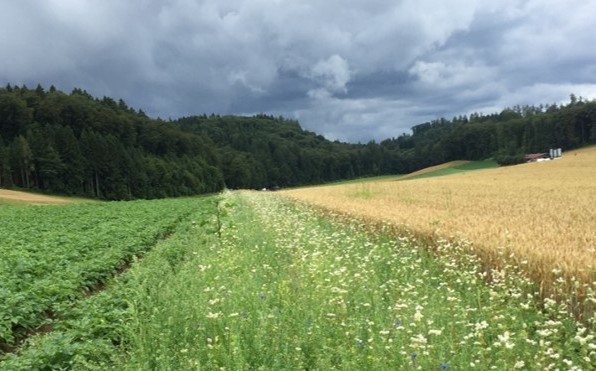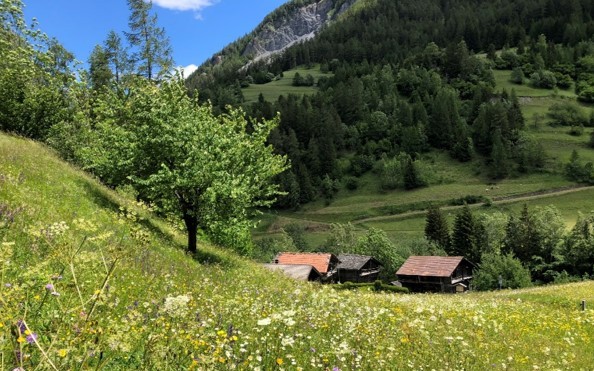
Because Switzerland’s agricultural landscape provides a habitat for a large number of plant and animal species, agricultural management has a major impact on biodiversity. When choosing management strategies, farmers weigh up numerous factors such as agricultural policy decisions and consumer behaviour.
Overall, the Swiss Federal Government compensates the agricultural sector with direct payments of CHF 2.8 billion per year. This money is paid as compensation for loss of income due to reduced production and for steps taken to protect the environment, including the maintenance and promotion of biodiversity by means of biodiversity priority areas (BPAs). The creation of BPAs is part of the Proof of Ecological Performance (PEP) in accordance with the Direct Payment Ordinance (DZV). Fulfilling the PEP is a requirement for receiving direct payments. Farms need to provide evidence that at least 7% of their utilised agricultural area (3.5% in the case of special crops) consists of BPAs. At present, around CHF 420 million per year is provided for the promotion of biodiversity. Between 1996 and 2005, the ‘Evaluation of Ecomeasures ’ project analysed the benefits of the biodiversity promotion measures in the Swiss Central Plateau. To date, however, a programme which would systematically monitor the development of biodiversity in cultivated land and enable statistically reliable statements to be made for Switzerland as a whole has been lacking.
In 2008, the FOEN and FOAG formulated environmental objectives that took the responsibility of farmers into account. In terms of biodiversity, these objectives were as follows: “Agriculture makes a significant contribution to maintaining and promoting biodiversity, encompassing the following aspects: (1) Species diversity and habitat diversity; (2) Genetic diversity within the species; and (3) Functional biodiversity” (cited from FOEN & FOAG, 2008, p. 30). These concerns are promoted by various agricultural policy measures such as e.g. the PEP and specific contributions for the creation and maintenance of BPAs. In 2010, the FOEN and FOAG initiated a monitoring programme to assess the effectiveness of the agricultural policy measures. Under the acronym ‘ALL-EMA’ – the German and French abbreviations for ‘Agricultural Species and Habitats’ – Agroscope developed a method for monitoring species and habitats in the agricultural landscape, in partnership with the Swiss Federal Institute for Forest, Snow and Landscape Research WSL, Hintermann and Weber AG and further experts.
Making use of synergies

On the one hand, ALL-EMA forms part of the FOAG’s general agricultural environmental monitoring programme focusing on biodiversity and landscape; on the other, it fills a gap in the set of Swiss national biodiversity monitoring programmes of the FOEN. As a supplement to the Swiss Forest Inventory LFI, ALL-EMA investigates the moderately common species and habitats that are relevant for the agricultural sector. By contrast, Biodiversity Monitoring Switzerland BDM investigates common and widespread species, whilst Monitoring the Effectiveness of the Conservation of Swiss Habitats of National Importance WBS and the Projects for Revising the Red List of Vascular Plants and Habitats studies protected and rare species and habitats. ALL-EMA makes use of synergies with the existing programmes, e.g. by including data from the BDM and the Common Breeding Bird Survey MHB as well as by using findings from the other programmes for evaluations taking into account the agricultural landscape.

Contacts
Data reference:
Flyer / Publication
Links





